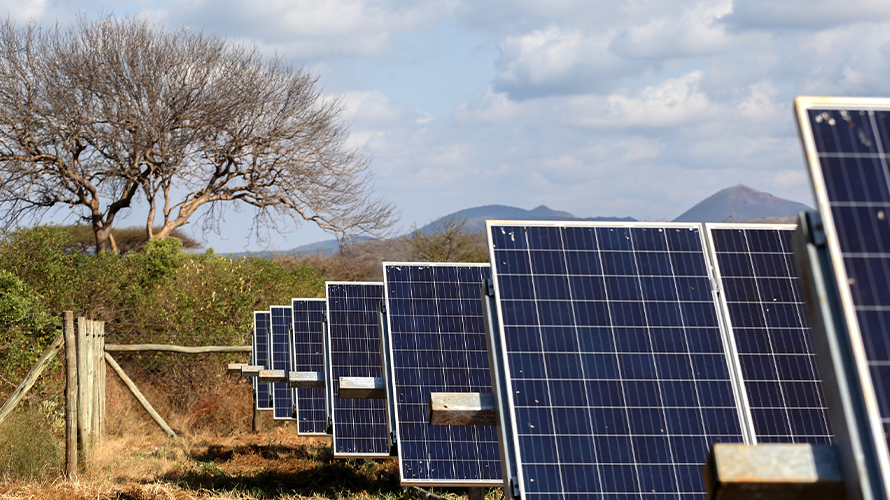As the world rushes to mitigate the effects of climate change and reduce carbon dioxide emissions into the atmosphere, efforts have been made to inculcate environmental consciousness into policies. One such effort is carbon financing. However, this concept could be quite convoluted.
The purpose of this article is to demystify carbon financing, briefly explain its origin, and assess its applicability in current climes.
Brief Origin
Carbon financing is an offshoot of the European Union International Emissions Trading (IET) scheme as contained in Article 17 of the Kyoto Protocol and Article 6 of the Paris Agreement.
The IET permitted countries with commitments under the Kyoto Protocol to acquire emission units from other countries with commitments under the Protocol and use them towards meeting a part of their emissions reduction targets. An international transaction log, a software-based accounting system, ensures secure transfer of emission reduction units between countries.
However, a similar strategy, known as cap-and-trade, was successfully deployed locally in the United States in the 1980s and 90s to phase out lead in petrol and to reduce sulphur dioxide and nitrous oxide emissions to combat acid rain.
Through the cap-and-trade system, governments set emissions caps for firms according to scientifically proven emissions cuts required to achieve climate goals. These firms then purchase permits for their emissions and must present these permits for each emissions generated. In instances where the firms have exhausted their permits, they could purchase spare permits from other firms which haven’t exceeded their quota.

From figure 1, emitter A has spare emissions allowance while emitter B has exceeded her emissions allowance cap. Therefore, emitter B purchases the excess from emitter A. This is carbon financing.
Carbon Financing for Net Zero
Emission reductions are typically measured in tonnes of carbon dioxide equivalent (tCO2e) and are represented by carbon credits. One carbon credit is equal to 1 tonne of tCO2e removed or avoided.
Carbon financing should not be confused with climate financing. Simply put, carbon financing is an innovative funding initiative that places a financial value on carbon emissions and allows companies wishing to offset their own emissions to buy carbon credits while climate financing refers to the funds required to combat climate change.
There are two categories or markets in carbon financing: the compliance market and the voluntary market.
The compliance market is regulated through carbon taxation and the cap-and-trade system. In the cap-and-trade system, an authority (such as the European Union) sets a cap on how much emissions can be generated for the entire continent and then allocates allowances or credits which companies and countries can trade amongst themselves.
This allocation is made using the overall historical emissions of these companies. The overall cap is reduced each year to meet a designated emissions reduction target.
Companies and/or countries which have reduced their emissions below their target and now have a surplus of credits can go into the market and trade off to companies and/or countries that have exceeded their emissions quota and need extra credits.
The voluntary market however is based on offsetting, so a firm that wishes to offset its emissions invests in sustainable projects. It is less regulated. These sustainable projects would be assessed by the authority, and issued a certificate.
The emissions prevented by these sustainable projects are converted into credits which then go into offsetting the firm’s generated emissions.
Through carbon financing, countries can transfer their emissions reduction obligations to other countries, but only one of these countries may count it towards its nationally determined contributions (NDC). The NDC is a country’s target carbon reduction as part of the Paris Agreement.
Double counting is prevented with the use of a tool called ‘corresponding adjustment’. This is important as double counting must be avoided so as not to overestimate global emissions reductions.
Carbon Tax
Carbon tax is a monetary penalty imposed on each unit of greenhouse gas emissions. This gives firms an incentive to reduce emissions where it is less expensive than paying the tax.
Getting the tax level right is key: too low and firms are likely to opt for paying the tax and continuing to pollute, over and above what is optimal for society. Too high and the costs will rise higher than necessary to reduce emissions, impacting on profits, jobs and end consumers.
Criticism of Carbon Financing
Critics of this carbon arbitrage claim that it really does not reduce the emissions if the wealthy nations or companies can simply outsource their emissions reduction obligations for a fee.
The countries selling these credits would not have generated those emissions anyway.
Still, others argue that this financial obligation incentivizes the companies to be more environmentally responsible, and also encourage development in the global south.
Theoretically the existing structure of carbon financing sets it up as a finite parameter because markets are expected to become redundant as every country gets to net zero emissions and the need to trade emissions diminishes.
Applicability in Current Climes
At COP27, Ghana and Switzerland signed the first country-to-country carbon projects under the new carbon market mechanism set out in Article 6.2 of the Paris Agreement.
However, at COP28, carbon credits negotiations collapsed over concerns of integrity.
COP29 which would be held in Azerbaijan is one to look forward to. Would policy makers around the world finally arrive at a suitable mechanism for effectively regulating the compliance carbon market, or would we wait till COP30 in Brazil?
Conclusion
As stated earlier in this article, the concept of carbon finance can easily become too convoluted to explain because it involves several interests and policy chiefs.
In this article, the fundamental principle of carbon finance has been explained. It is simply an initiative that allows companies and countries to offset their carbon emissions by trading credits (which are equivalent to tonnes of CO2 emitted) with other countries.



